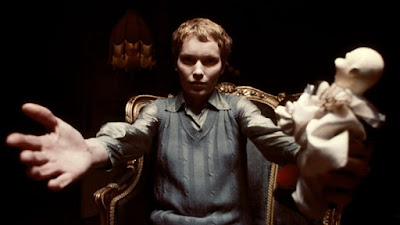Though mostly working under the radar as an unpretentious film
worker, British film and television director Richard Loncraine despite only
making films every several years has carved out quite a unique niche for
himself that’s only getting recognition now.
From his 1982 adaptation of Dennis Potter’s controversial teleplay Brimstone
& Treacle to his Nazi Germany transposition of William Shakespeare’s Richard
III, Loncraine’s aesthete represents a cantankerous, sardonic regard for
Old Britain and all things Britannia while ushering in a uniquely modern gothic
patina to his stories. Underneath the
veneer of British formalities lies a dark undercurrent running through
everything with little to no characters you feel comfortable trusting, implying
an elderly Great Britain rotting from the inside out.
--Andrew Kotwicki





